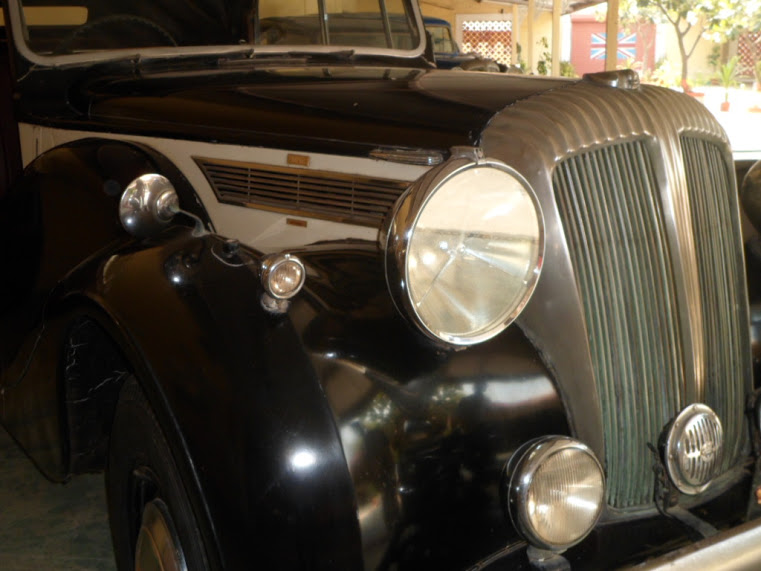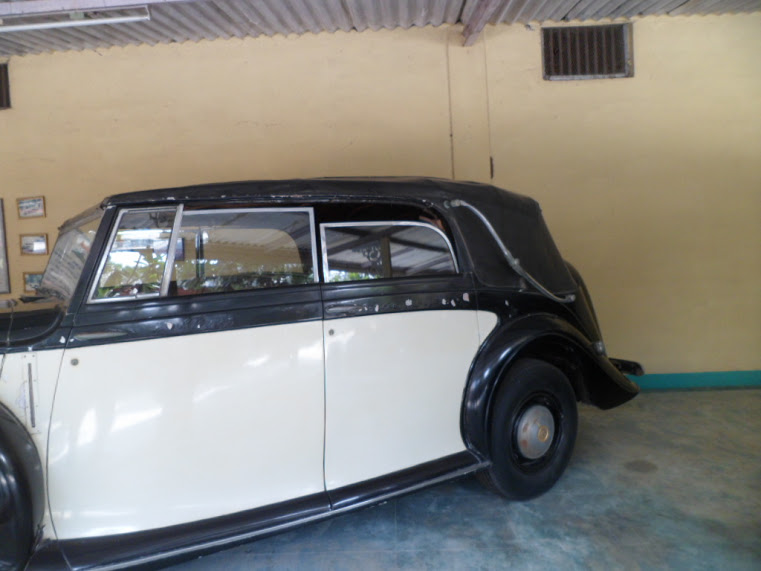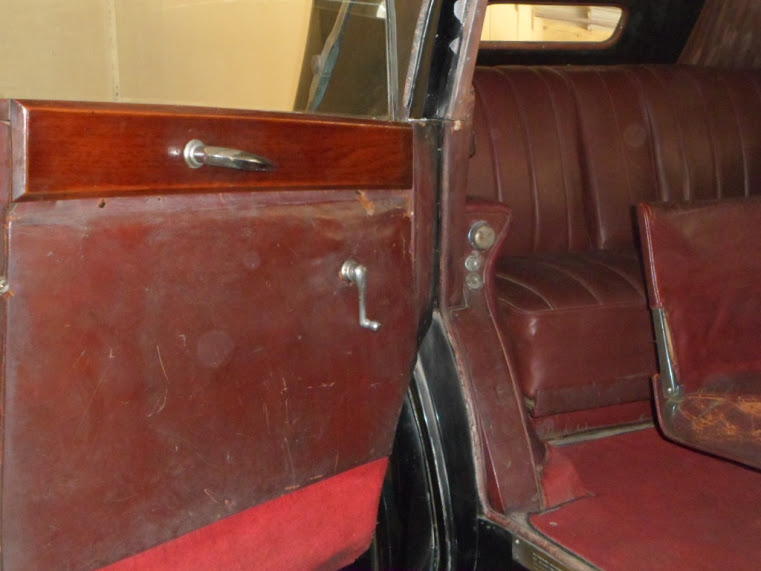by Laura Breen on 6 December, 2012

Last week, we were able to complete another small piece of the Daimler history puzzle…
Many thanks to a WA enthusiast who kindly emailed me some photos which shed further light on the fate of the other cars commissioned for the planned Royal Tour of Australia in 1949.
When the tour was cancelled at a very late stage due to the King’s ill-health, the Australian High Commissioner in London was able to offload two Daimlers via representatives for British interests in India. According to original files in the Museum’s collection created by London coachbuilders Hooper and Company, this Daimler tourer (chassis 51703, body 9428) was acquired by Maharaja Sri Sir Jaya Chamarajendra Wodeyar Bahadur (1919-1974), the 25th and last Maharajah of Mysore (1940-1950).
From the inception of the motor car until the mid twentieth century, the Maharajas of India were among the world’s greatest consumers of luxury cars and technological innovation. Under the British Raj, India was a land of fabulously wealthy princely states and abject poverty segregated by the Hindu caste system.
Well-known as a patron of the arts, the Maharaja of Mysore’s most profound act was as one of the signatories to the 1947 Instrument of Accession – a legal document created in accordance with the 1947 Indian Independence Act, which dissolved the Indian princely states under British suzerainty into the unified dominions of India or Pakistan.
The Maharaja was well-travelled and familiar with European aristocratic traditions. Like the British royalty, the pageantry of a motorcade ably illustrated his wealth, taste and status.
When the cancellation of the tour was confirmed in November 1948, the six completed cars were waiting on the docks to be shipped to Australia. As the Daimler Company employees resigned themselves to unpacking the carefully constructed crates in February 1949, news filtered through of the Maharajah’s purchase, and with it a list of exacting specifications for a complete refit.
Perhaps fortunately, the feelings of these employees as they stripped out the new upholstery and fittings of the Royal Tour car remain lost to history.
In any case, over the next few months the luxurious refurbishment included new dark beige leather upholstery and polished veneer woodwork. The King’s royal blue sidepanels were repainted in racy eye-catching cream.


The Maharaja also requested a number of additions to the car including an electric fan, a flower vase, a set of silver beakers, and a set of custom-made suitcases, a dressing case and a luncheon basket fit for four persons to fit in the boot space.
The description of the travelling dressing case overwhelmingly evokes the opulence of the Maharaja’s existence. Constructed in leather to match the other cases in the boot, this contained two hair brushes, a hat brush, a clothes brush (all backed in ivory), a ivory comb and boot lift, six small bottles, a talcum powder bottle, a cream jar (all of cut glass with ivory and silver-inlaid tops), a leather case containing manicure equipment, a shaving kit, and finally a trinket box and a cuff stud box.
The dressing case alone cost the Daimler Company £160 to manufacture. Such opulence seems incredible to our modern tastes.
In November of 1949, the car was shipped to India for the Maharaja’s use. Happily, it survives today in beautiful condition in the collection of the late Pranlal Bhogilal in Kathwada in Ahmedabad, India. Separated by only one digit in their respective chassis numbers (the Museum’s Daimler is 51704) and constructed side by side in Coventry over sixty years ago, these two ‘sisters’ are both remarkable survivors.
I own one of the db18 staff cars, built for the royal tour, but ended up with the SA govemor
Hi David,
It was great to have a chat with you yesterday and hear all about the history of your DB18. Thanks also for your interest in the Royal Daimler Project, I hope you continue to follow the work we’ve been doing on the conservation of the car. If you’d like to send us a photograph of your car, we’d be very happy to post it up here. Our email address is RoyalDaimlerProject at nma.gov.au.